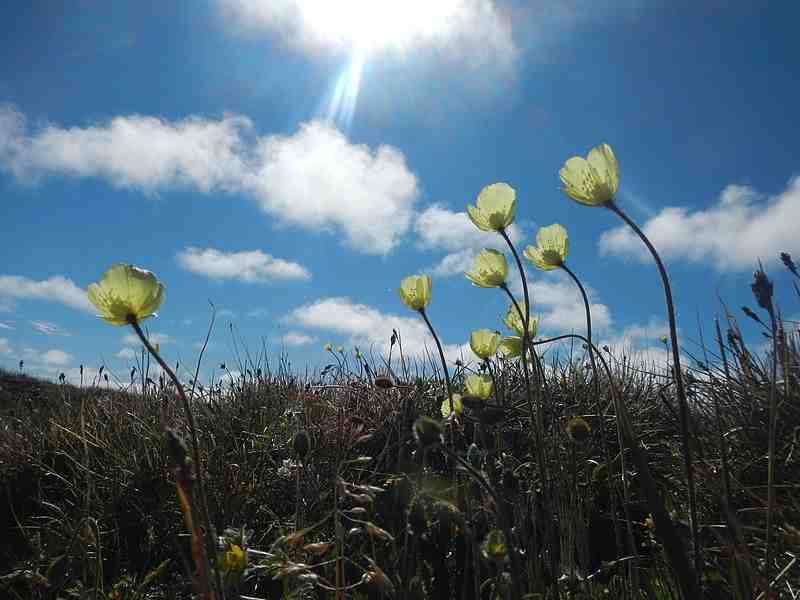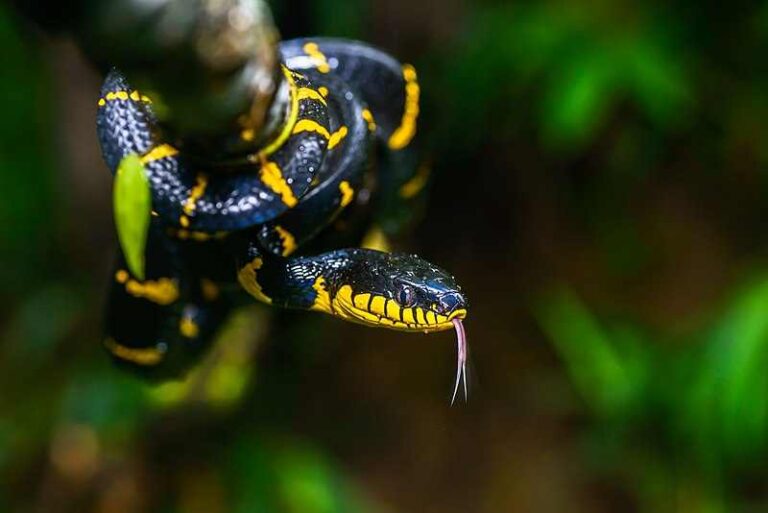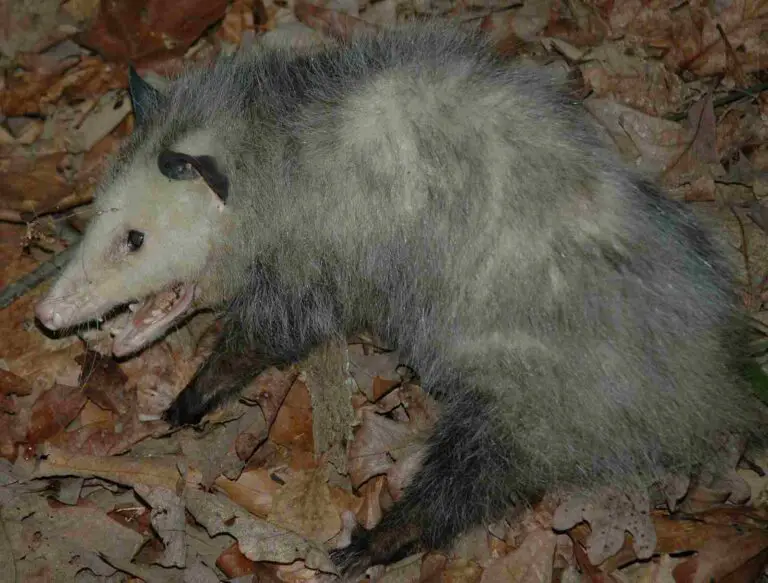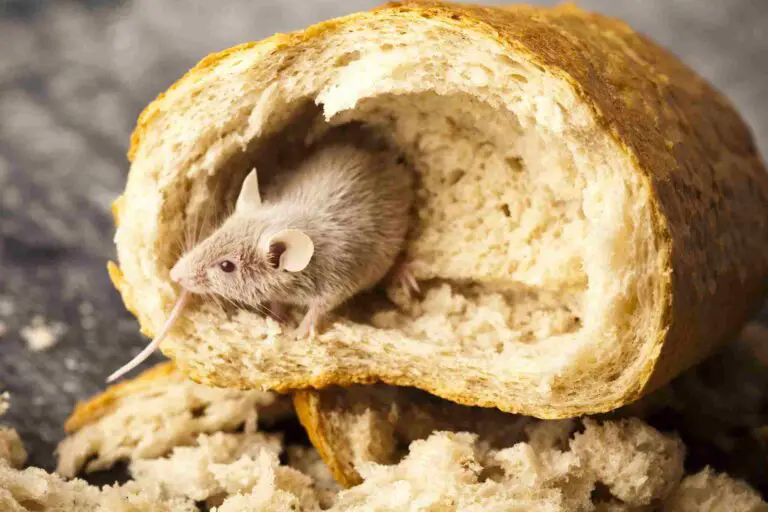Plants in the Tundra and Their Characteristics Discussed
Plants in the tundra include shrubs like dwarf birch, sedges like rock sedge, grasses like Arctic bluegrass, herbaceous flowering plants like mountain sorrel, mosses, hornworts, liverworts, forbs, and dwarf trees.
This article discusses plants in the tundra and their characteristics, as follows;
1). Tundra Shrubs (as a group of Plants in the Tundra Biome)
Shrubs in the tundra include multiple species of woody perennial plants that are known for their ecologic resilience.
Some characteristics of shrubs in the tundra are;
1. Compact morphology
2. Relatively-low height
3. Mechanical resilience (due to dense-growth) to withstand elements like wind
Shrubs in the tundra play crucial roles as food sources (they are producers in the tundra food chain) as well as micro-habitats for some organisms [12].
In the Arctic tundra, shrubs constitute a fairly-prominent group of plants.
Some examples of shrubs in the tundra are birch (Betula spp.), willow (Salix spp.), dwarf birch (Betula nana), and heather (Callana vulgaris).

For these plants, the ability to survive under the harsh tundra climate and in the presence of low-fertility soil, is a result of a long evolutionary process of adaptation to such environmental conditions.
Shrubs are capable of establishing their own microclimatic conditions that are less harsh and more favorable for growth, than the general tundra conditions. This they achieve by trapping air, heat and moisture around them, forming an insulated, relatively-humid sub-environment in which they can thrive.
In spite of these adaptations, shrubs are not the most dominant or common plants in tundras.
The most common plants in the tundra are herbaceous plants; which have evolved so that they can store significant amounts of water and energy in their tissues.
2). Tundra Sedges
Tundra sedges are a group of plants of the taxonomic family Cyperaceae [10], which have also adapted to the conditions of the tundra.
Sedges are grass-like, and herbaceous in tissue composition. Their characteristics include narrow, elongate leaves and dense growth patterns.
The functions of sedges in the tundra include oxygen cycling, biomass production, microhabitat formation and climate modification.
*Adaptations of Sedges for Growth in the Tundra
In the course of their evolution, sedges that occur in the tundra have developed various adaptive characteristics that enable them survive. Some of these characteristics are discussed below;
1. Low Growth-Height in Tundra Sedges
Low growth-height is one of the adaptations of tundra sedges. They tend to have lower heights in general than their counterparts in other ecosystems, such as savanna grasslands.
This morphological/growth structure reduces heat loss, while minimizing their exposure to wind.

2. Rapid Growth and Nutrient Efficiency
Compared to plants in other biomes, sedges in the tundra tend to grow rapidly during the brief summer/growing season.
This adaptation is driven by the need to maximize the use of solar radiation and nutrients while these resources are available in the summer.
Rapid growth is also indicative of efficiency in the consumption of nutrients, which is a typical adaptation of tundra plants.
By growing rapidly, sedges are able to survive on the limited nutrients produced by slow biodegradation in the shallow active soil layer (which is underlain by impenetrable permafrost [6]).
3. Low Temperature-Tolerance
Sedges in the tundra are able to survive prolonged periods of extreme cold by reason of specialized adaptations in their vegetative structure and tissue composition.
One of the endangered plants in the tundra is rock sedge (Carex rupestris) [16]. It is an indigenous specie in North America, and occurs in both Arctic and alpine tundra ecoregions.
Factors that have caused this plant to become endangered include human activity disturbance, climate change and loss of habitat.
Efforts to conserve the sedge population in the tundra have included projects in environmental remediation, revegetation, environmental impact/human activity mitigation, and climate change monitoring.
3). Grasses in the Tundra (as a group of Plants in the Tundra Biome)
Tundra grasses are a group of monocotyledonous plants from the taxonomic family Poaceae [8].
Their characteristics include; hollow stems; narrow, elongate leaves, and, occasionally, flower-production.
Grasses are fairly prominent in the tundra, and play multiple important roles toward the sustainability of the biome.
It must be noted that numerous species of grass have been found in tundra regions, and the species that occur in any particular area depend on individual bio-geographic conditions.
Examples of grass species known to survive in the tundra are; tufted hairgrass (Deschampsia cespitosa), cotton grass (Eriophorum spp.), Arctic bluegrass (Poa arctica), and alpine bluegrass (Poa alpina).
*Tufted Hairgrass
The tufted hairgrass is a resilient specie of grass that grows in alpine and Arctic tundra areas.
Its characteristics include dense foliage growth, feathery inflorescence, and narrow, elongate leaves.
Its adaptations are designed to enable it thrive under high-velocity winds and frigid temperatures.

*Cotton Grass
Cotton grass does not bear all typical characteristics of grasses, and may in some cases be classified as a sedge.
Features of this plant include brown or white fluffy inflorescence (from which the name 'cotton' grass is derived). Within the tundra, cotton grass grows in the most humid zones, such as wetland micro-habitats.
*Arctic Bluegrass
As the name implies, Arctic bluegrass is highly adapted to polar regions, so that is has a fairly wide geographic distribution in the Arctic.
Features of Arctic bluegrass include narrow, short leaves and dense fibrous tufts.
It contributes immensely to the tundra food chain by acting as food for large herbivore like the caribou and muskox.
*Alpine Bluegrass
Alpine bluegrass is a specie of grass whose growth is mostly restricted to alpine tundra zones.
The plant has small blue-green leaves, and grows in dense clusters to form vegetative mats.
Its adaptive characteristics enable it to excel under the tundra climatic conditions.
Adaptations of grasses in the tundra include;
1. Shallow root system
2. Cold tolerance
4. Small leaves for energy and water conservation
Functions/roles of tundra grasses include;
1. Nutrient-cycling
2. Microhabitat provision
3. Soil conservation/stabilization
4. Contribution to species richness and biodiversity
5. Forage for herbivores
4). Herbaceous Flowering Plants in the Tundra
Herbaceous flowering plants in the tundra are a group of diverse, non-woody plants that have a relatively-short lifecycle, during which they produce flowers.
This group of plants is important for its ecological roles in the tundra. Plants from other categories including sedges and grasses, can also be classified as herbaceous plants because they have non-woody tissues.
The degree of vulnerability and need for ecologic protection/preservation of herbaceous tundra plants may vary from one specie to another, although they are generally resilient and do not fall under the endangered category.
Like other groups, herbaceous flowering plants survive by means of their adaptations which are tailored to the conditions of their environment (especially for native species).
Examples of herbaceous plants in the tundra are; alpine avens (Dryas spp.), Arctic poppy (Papaver radicatum), and mountain sorrel (Oxyria digyna).
*Alpine Avens
The alpine aven can be described as a low-growing, small plant that produces yellow or white inflorescence.
It produces hairy granular projections or trichomes on its leaves and fruits, which help with insulation and heat conservation.
Other adaptive characteristics of this plant include resource efficiency and seasonally-synchronized growth.
*Arctic Poppy
Arctic poppy is a flowering, non-woody plant that survives in the tundra.
Attributes of this plant include clustered-growth, lobe-shaped leaves, and orange or yellow flowers.
The growth pattern of Arctic poppy is strongly influenced by sunlight availability and direction.

*Mountain Sorrel
The mountain sorrel is one of the herbaceous plants of the tundra.
It produces unique green or red leaves as well as multiple, closely-spaced flowers.
As the name implies, this plant is mostly found in the mountain ranges of the alpine tundra, as well as along slopes in other polar zones.
Its adaptive characteristics include high photosynthetic efficiency, and cold tolerance.
Currently, herbaceous flowering plants in the tundra are affected (to an adverse degree, in some cases) by the impacts of global warming, which create conditions contrary to those which influenced their evolution.
Environmental changes in temperature, humidity, permafrost distribution, and precipitation, all affect these plants.
5). Mosses in the Tundra (as a group of Plants in the Tundra Biome)
Both vascular and non-vascular plants are found in the tundra.
Mosses are non-vascular plants of the taxonomic division Bryophyta [14], which are typically small and low-growing in their physical features.
In the tundra, mosses are fairly common, and play a role in influencing ecological dynamics of the biome.
Characteristics of mosses include lack of true leaves, stems and roots; as well as dense, near-ground pattern of growth.

In place of true organelles, they have less-complex structures referred to as gametophytes that are used to absorb nutrients and water [7].
Mosses are integral to the tundra plant community, and known to cover significant expanses of ground.
There are various ways in which mosses are important to the tundra environment, including their function as carbon sinks, biological indicators, as well as in nutrient cycling, microclimate/habitat creation, and moisture retention.
*Role of Mosses in Nutrient-Cycling, in the Tundra
Mosses in the tundra are important toward the natural recycling of used nutrients.
In the course of their metabolism, mosses facilitate biodegradation of organic matter in soil to release inorganic minerals. This contribution is essential to optimize the low-fertility tundra soil and make it potent for plant nutritional-support.
*Tundra Moss as a Carbon Sink
Mosses are efficient in carbon sequestration, and contribute to the effectiveness of the tundra carbon cycle.
In the process of photosynthesis, these plants absorb carbon dioxide from the atmosphere; using it for the production of biomass.
On a global scale, such processes account for the importance of the tundra in regulating climate and mitigating warming.
*Tundra Moss as a Biological Indicator
Mosses are fairly sensitive to environmental stimuli, and are valuable as indicators of change and unusual trends in their environment [9].
By studying the species composition, distribution, abundance and growth patterns of mosses, conditions of the tundra can be deduced.
This can be especially helpful when monitoring a range of parameters like precipitation, permafrost consistency, and temperature. Using mosses to analyze the tundra environment reveals the dynamic between biotic and abiotic factors in this biome.
*Microclimate/Habitat Creation by Tundra Mosses
Mosses are known to alter the conditions within their immediate surroundings.
Clusters of moss-mats can retain humidity and heat, serving as a micro-habitat or shelter, with less-severe conditions that can support the growth of microorganisms and some invertebrates, as well as other plants.
*Moisture Retention by Mosses in the Tundra
Mosses are able to absorb and retain moisture in the dry and cold tundra environment.
This is due to the dense growth pattern of mosses, which also enables them form micro-climatic habitats.
6). Hornworts in the Tundra
Hornworts are bryophytes like mosses, and may be described as members of the taxonomic division Anthocerotophyta [5].
As versatile, non-vascular plants, hornworts occur in a variety of habitats that include boreal forests and tundras. However, they are less-prominent in the tundra than liverworts and mosses.
*Attributes of Hornworts in the Tundra
Features of hornworts include a distinctive, sporophyte structure that is horn-shaped.
A ribbon-like, flattened structure called the thallus constitutes the main body of hornworts [11]. It is a vegetative component and comprises of a single cellular layer, while true stems, leaves and roots are absent.
Functions of these absent organelles are generally performed by the thallus.

As well-adapted species, hornworts are important to the tundra, through their roles in soil stabilization, nutrient cycling, moisture retention, and ecological monitoring.
*Role of Hornworts in Tundra Soil Stabilization
The false-roots of hornworts are called rhizoids [3].
Because hornworts themselves grow in dense clusters, these rhizoids are effective in binding soil particles in a manner that reduces erosion and leaching. This creates a stable habitat for soil-dwelling microbes, and some plants.
*Nutrient-Cycling by Hornworts in the Tundra
Nutrient-cycling is another important function of hornworts in the tundra ecosystem.
The nutrients taken-up by hornworts during their growth, are released back to the environment in the course of their decomposition. Hornworts also contribute to the breakdown of organic materials in soil.
*Role of Tundra Hornworts in Moisture Retention
Water absorption and retention are carried out by the thallus of hornworts, to enable these plants survive the desert-like moisture deficiency of the tundra.
This function also benefits the environment, by establishing favorable microclimatic conditions around hornworts, and supporting the growth of other organisms that shelter in the resulting micro-habitat.
*Hornworts as Tools for Ecological Monitoring in the Tundra
Like mosses, the hornwort population can be used as a tool to analyze the ecologic history and trends of the tundra.
Hornworts are environment-sensitive, and reflect even minute changes in their growth patterns, species composition and abundance. These reflections can be studied as part of environmental monitoring, to derive information of the health of the ecosystem.
Carbon sequestration is also carried out by hornworts; which work alongside other plants (including other bryophytes) to capture and store atmospheric carbon.
7). Liverworts in the Tundra (as a group of Plants in the Tundra Biome)
Liverworts are bryophytes from the taxonomic division Marchantiophyta [2].
They are small, versatile and non-vascular plants that occur in the tundra among other biomes.
Adaptations of liverworts enable them thrive and play their role(s) in the tundra ecosystem.
*Attributes of Liverworts
There are diverse forms in which liverworts may occur.
However, they are generally similar to hornworts, having a flat body structure called the thallus.
In liverworts, the thallus usually has a segmented form, lacking well-developed tissues like those found in vascular plants.
Anchorage is provided by rhizoids, which are thread-like structures that act in place of true roots to support the plant while absorbing nutrients and water from soil.
Liverworts are important for their functions in the tundra, that include; moisture retention, soil stabilization and formation, carbon sequestration, microclimate and habitat creation, and nutrient cycling.
*Moisture Retention by Liverworts in the Tundra
The adaptations of liverworts make them capable of retaining moisture; which is crucial to their survival in the cold and dry terrain.
Efficient absorption and retention of water is usually achieved using the thallus, which is structurally and compositionally designed for this purpose.
In some liverworts, a specialized structure referred to as the gemmae cup is present, which helps to collect and retain water [5].
*Soil Stabilization and Formation by Liverworts in the Tundra
Along with other bryophytes like mosses, liverworts play a role in the formation and stabilization of tundra soil.
The dense growth pattern of liverworts facilitates organic matter accumulation and breakdown, which results in soil as well as nutrients for plant growth.
At the same time, rhizoids from the liverworts help stabilize the soil and mitigate both erosion and leaching.

*Carbon Sequestration by Liverworts in the Tundra
Like other bryophytes, liverworts play a significant role in carbon storage, through their photosynthetic activities that capture and sequester atmospheric carbon dioxide.
*Role of Liverworts in Microclimate and Habitat Creation, in the Tundra
Liverworts are able to modify the conditions of the micro-environment around them, by trapping moisture and air, to provide higher humidity and warmer temperatures.
These modified conditions favor the growth of fungi, bacteria, as well as some invertebrates that rely on the liverworts for shelter.
*Nutrient-Cycling by Tundra Liverworts
In the tundra, liverworts contribute to nutrient-cycling.
In the course of their growth, liverworts absorb nutrients like phosphorus and nitrogen, and subsequently release these nutrients through decomposition. By this means the liverworts act as nutrient-reservoirs; and ensure that resources are recycled effectively, and available for use by other organisms.
Other functions of liverworts include indication of ecological conditions, which can be utilized in environmental monitoring.
*Lichens in the Tundra Ecosystem
Lichens also occur in the tundra.
Although they are sometimes described as non-vascular plants, lichens are in fact the product of symbiotic association between fungi and photosynthetic algae [13].
Lichens in the tundra are highly susceptible to decline in population size and diversity, because they are very sensitive to climate change and other environmental stimuli..
8). Tundra Forbs
Forbs can be described as a diverse group of non-woody plants that are often flower-bearing, and can occur in a variety of biomes.
They may be categorized under the broader group of herbaceous plants, and their characteristics include the production of conspicuous flowers, non-woody stems and broad leaves.
Forbs in the tundra survive by means of their unique adaptations, and play multiple ecologic roles which are beneficial to the tundra.
*Importance of Forbs in the Tundra Biome
The importance of forbs in the tundra includes; nutrient-cycling, contribution to biodiversity, erosion-mitigation, and sustenance of pollinators.
1. Nutrient-Cycling by Tundra Forbs
Forbs help facilitate nutrient cycling in the tundra by absorbing nutrients during growth, releasing these nutrients during decomposition, as well as by participating in nitrogen fixation and carbon sequestration, among other biochemical processes.
2. Contribution to Biodiversity by Forbs in the Tundra
Forbs constitute part of the overall species of plants in the tundra.
This means that their presence increases tundra plant-biodiversity, and helps to establish a larger producer population to support other organisms across the trophic levels of the tundra by providing food, favorable microclimate, as well as micro-habitat.
3. Erosion-Mitigation by Forbs in the Tundra
By developing intertwined, extensive root systems, forbs help in the stabilization of tundra soil and the control of erosion.
Roots of forb plants may act as binders that hold soil particles together; increasing cross-sectional adhesion and reducing susceptibility to erosion.
Anchorage by forbs in the soil, contributes to improvement of the soil's structure, and the maintenance of the entire tundra landscape.
4. Tundra Forbs in the Sustenance of Pollinators
Many species of forbs that grow in the tundra, have a dynamic relationship with pollinators like moths; on which they also depend for their reproduction and genetic diversification.
To attract these pollinators, they produce conspicuous flowers, which are a major food source to several pollinators, and accounts for their survival in the tundra habitat.
*Adaptations of Forbs in the Tundra
The adaptations of forbs in the tundra include; well-developed root system, rapid flower production, cold tolerance and low-height growth.
1. Well-Developed Root System
Forbs have very well-developed roots compared to other plants that grow in the tundra.
Their roots are effective at probing the maximum penetrable depth of the tundra soil (before reaching impenetrable permafrost). This adaptation gives forbs superior anchorage and effective uptake of essential resources (water and nutrients) from soil.
The root system of forbs is a product of evolutionary developments for coping with drought conditions, as well as for staying competitive against other types of plants. These two capabilities are both essential for survival in the tundra.
2. Rapid Flower-Production in Tundra Forbs
Many species of forbs that grow in the tundra, have evolved to produce flowers rapidly, and early in their lifecycle.
This adaptation enables them maximize the resources and favorable conditions available during the short growing season, while increasing the rate and chances of pollination before winter.
By flowering early, forbs in the tundra improve their competitiveness against other plants, because they are able to reproduce early in the growing season, and become dominant as utilizers of water and nutrients.

3. Cold Tolerance in Tundra Forbs
Forbs in the tundra ecosystem are adapted such that they can tolerate prolonged periods of low temperature.
Frost-resistant tissues that are mechanically resilient and heat-absorbent are among the features of tundra forbs that make them cold tolerant.
In some forbs, antifreeze compounds including some proteins and saccharides are also produced; which help to prevent frost formation on the plant.
4. Low-Height Growth in Tundra Forbs
Forbs that occur in the tundra tend to grow near-ground, so that they form dense vegetative clusters or mats.
This adaptation reduces their exposure to winds that could cause dessication.
It also increases the effectiveness of microclimate formation by the vegetation.
9). Trees in the Tundra (as a group of Plants in the Tundra Biome)
Trees are hardly represented in the tundra; whose name derives from the Finnish word Tunturi that refers to a treeless landscape [1].
However, there are some parts of the tundra that witness occasional growth of trees, especially in transitional zones like the subarctic, where the climatic conditions are less extreme than they are in the intra-tundra zone.
The trees that may be found in tundras are generally stunted and small, and may be described as dwarf trees.
Their small and stunted size can be seen as an adaptation for conserving energy and nutrients.
Occurrence as well as abundance of trees in the tundra may both vary, depending on edaphic (soil-related), human, and climatic influences.
It must also be noted that many of the 'trees' in the tundra are simply shrubs that have unique growth patterns; as is the case with willow (Salix spp.) and dwarf birch (Betula nana).
The adler (Alnus spp.) is a small tree closely related to birch shrubs; which also grows in tundras.
Adaptations of trees and large shrubs that survive in the tundra include; shallow root system, small size, and cold tolerance.
1. Shallow Root System in Tundra Trees
Permafrost which occurs in the tundra, limits the penetrable depth of plant roots in soil.
The presence of such permafrost has caused tundra trees to develop shallow root systems, which have a broad horizontal span, for both anchorage and access to essential resources.
2. Small Size as an Adaptation of Tundra Trees
The small, stunted size of tundra trees is both an outcome of the nutrient limitations and dryness of the ecosystem, and an adaptation for coping with these conditions.
Like other tundra plants, dwarf trees are very low in height compared to trees in other ecosystems like tropical rainforests. This enables them to rely on the anchorage provided by their shallow roots, and to survive on limited resources.

3. Cold Tolerance in Tundra Trees
Adaptations of tundra trees enable them to survive the low temperatures of their surroundings.
These adaptations include freeze-resistant tissues and thick bark, as well as hair-like projections that provide thermal insulation while preventing excessive water loss.
*Human Influence and Climate Change on Tundra Trees
The phenomenon of climate change and its associated human activities, play a major role in the presence as well as distribution, of trees within the tundra biome.
Progressive increase in temperatures due to climate change in Arctic and subarctic zones, have led to various changes, including shifts in the botanical composition of the tundra.
Since tree growth is inhibited by extreme cold, warming implies that the tree-line or forested zone is gaining more ground in tundra regions.
The outcome of this is progressive afforestation, also called Arctic greening; whereby trees and other vegetation begin to colonize formerly treeless lands [15].
Factors that influence the transition of tundras to tree-bearing lands include nutrient availability, rate of warming, and soil characteristics.
Human activities such as urbanization, infrastructure development, and mining in tundra zones, also facilitate habitat changes that could lead to an increase in the growth of trees.
Non-native plant species (such as some trees) can also be introduced into the tundra by humans.
Conclusion
Plants in the tundra are;
1. Shrubs like Dwarf Birch
2. Sedges like Rock Sedge
3. Grasses like Arctic Bluegrass
4. Herbaceous Flowering Plants like Mountain Sorrel
5. Mosses
6. Hornworts
7. Liverworts
8. Forbs
9. Dwarf Trees
References
1). Balasubramanian, A. (2005). "Ecology of Terrestrial Habitat." Available at: https://www.researchgate.net/publication/309460627_Ecology_of_Terrestrial_Habitat. (Accessed 21 June 2023).
2). Forrest, L. L.; Davis, C.; Long, D.; Crandall-Stotler, B.; Clark, A.; Hart, M. L. (2009). "Unraveling the evolutionary history of the liverworts (Marchantiophyta): Multiple taxa, genomes and analyses." The Bryologist 109(Fall 2006):303-334. Available at: https://doi.org/10.1639/0007-2745(2006)109[303:UTEHOT]2.0.CO;2. (Accessed 21 June 2023).
3). Frangedakis, E.; Shimamura, M.; Villarreal, J. C.; Li, F. W.; Tomaselli, M.; Waller, M.; Sakakibara, K.; Renzaglia, K. S.; Szövényi, P. (2021). "The hornworts: morphology, evolution and development." New Phytol. 2021 Jan;229(2):735-754. Available at: https://doi.org/10.1111/nph.16874. (Accessed 21 June 2023).
4). Gradstein, S. R. (2018). "Key to hornworts (Anthocerotophyta) of Colombia." Caldasia 40(2):262-270. Available at: https://doi.org/10.15446/caldasia.v40n2.71750. (Accessed 21 June 2023).
5). Graham, T.; Dixon, M. (2012). "Liverwort Control: An Ancillary Role for Ozone-based Irrigation Water Treatment Systems?" HortScience: a publication of the American Society for Horticultural Science 47(3):361-367. Available at: https://doi.org/10.21273/HORTSCI.47.3.361. (Accessed 21 June 2023).
6). Grünberg, I.; Wilcox, E. J.; Zwieback, S. ; Marsh, P.; Boike, J. (2020). "Linking tundra vegetation, snow, soil temperature, and permafrost." Available at: https://doi.org/10.5194/bg-2020-88. (Accessed 21 June 2023).
7). Haig, D. (2013). "Filial mistletoes: the functional morphology of moss sporophytes." Ann Bot. 2013 Mar;111(3):337-45. Available at: https://doi.org/10.1093/aob/mcs295. (Accessed 21 June 2023).
8). Hodkinson, T. R. (2018). "Evolution and Taxonomy of the Grasses (Poaceae): A Model Family for the Study of Species-Rich Groups." Annual Plant Reviews (pp.1-39).Available at: https://doi.org/10.1002/9781119312994.apr0622. (Accessed 21 June 2023).
9). Huckabee, J. W. (1973). "Mosses: sensitive indicators of airborne mercury pollution." Atmos Environ. 1973 Jul;7(7):749-54. Available at: https://doi.org/10.1016/0004-6981(73)90155-8. (Accessed 21 June 2023).
10). Latalowa, M.; Tobolski, K.; Nalepka, D. (2004). "Cyperaceae – Sedge family." Late Glacial and Holocene history of vegetation in Poland based on isopollen maps. (pp.283-292). Available at: https://www.researchgate.net/publication/257916829_Cyperaceae_-_Sedge_family. (Accessed 21 June 2023).
11). Renzaglia, K. S.; Villarreal, J. C.; Duff, R. J. (2008). "New insights into morphology, anatomy, and systematics of hornworts." Available at: https://doi.org/10.1017/CBO9780511754807.004. (Accessed 21 June 2023).
12). Rodrigues, R. (1994). "Microhabitat Variables Influencing Nest-Site Selection by Tundra Birds." Ecological Applications, Volume 4, Issue 1 p. 110-116. Available at: https://doi.org/10.2307/1942120. (Accessed 21 June 2023).
13). Sanders, W. B.; Masumoto, H. (2021). "Lichen algae: the photosynthetic partners in lichen symbioses." The Lichenologist 53(5):347-393. Available at: https://doi.org/10.1017/S0024282921000335. (Accessed 21 June 2023).
14). Shaw, A. J.; Cox, C. J.; Goffinet, B.; Buck, W. R.; Boles, S. B. (2003). "Phylogenetic evidence of a rapid radiation of pleurocarpous mosses (Bryophyta)." Evolution. 2003 Oct;57(10):2226-41. Available at: https://doi.org/10.1111/j.0014-3820.2003.tb00235.x. (Accessed 21 June 2023).
15). Shiryaev, A.; Moiseev, P., Peintner, U.; Devi, N.; Kukarskikh, V. v.; Elsakov, V. V. (2019). "Arctic Greening Caused by Warming Contributes to Compositional Changes of Mycobiota at the Polar Urals." Forests 10(12). Available at: https://doi.org/10.3390/f10121112. (Accessed 21 June 2023).
16). Svitková, I., Svitok, M.; Petrik, A.; Bernátová, D.; Senko, D.; Sibik, J. (2019). "The Fate of Endangered Rock Sedge (Carex rupestris) in the Western Carpathians-The Future Perspective of an Arctic-Alpine Species under Climate Change." Diversity 11(9). Available at: https://doi.org/10.3390/d11090172. (Accessed 21 June 2023).




